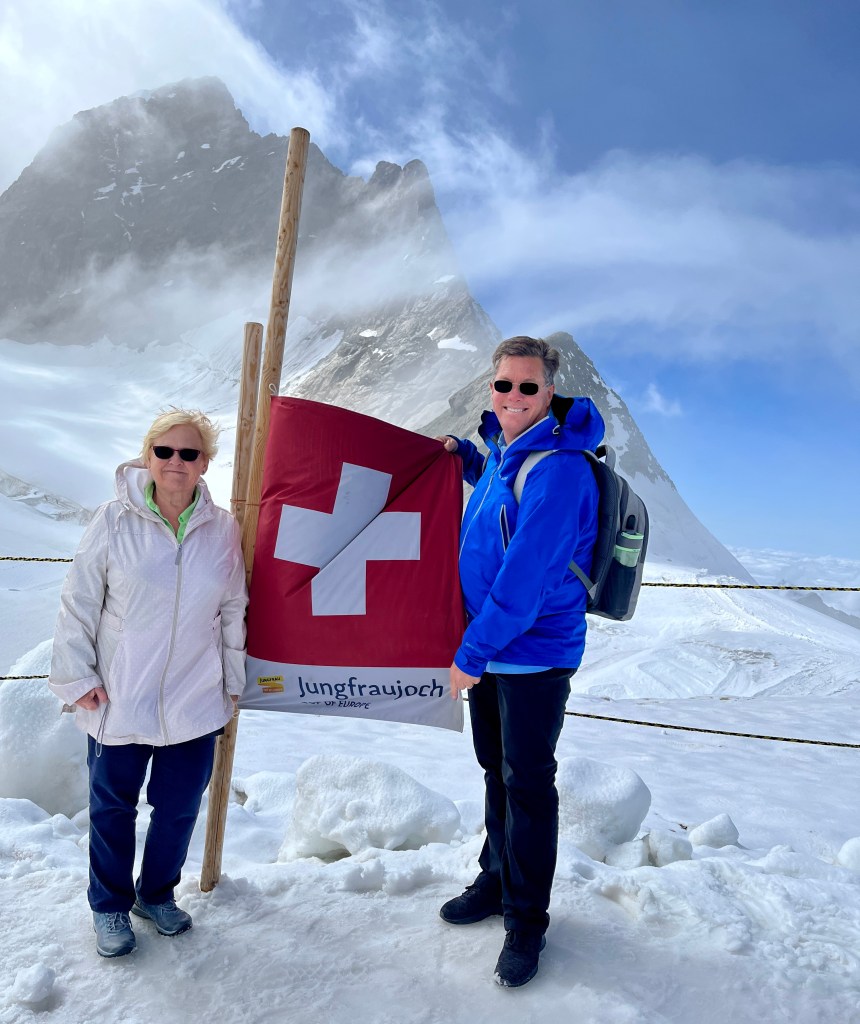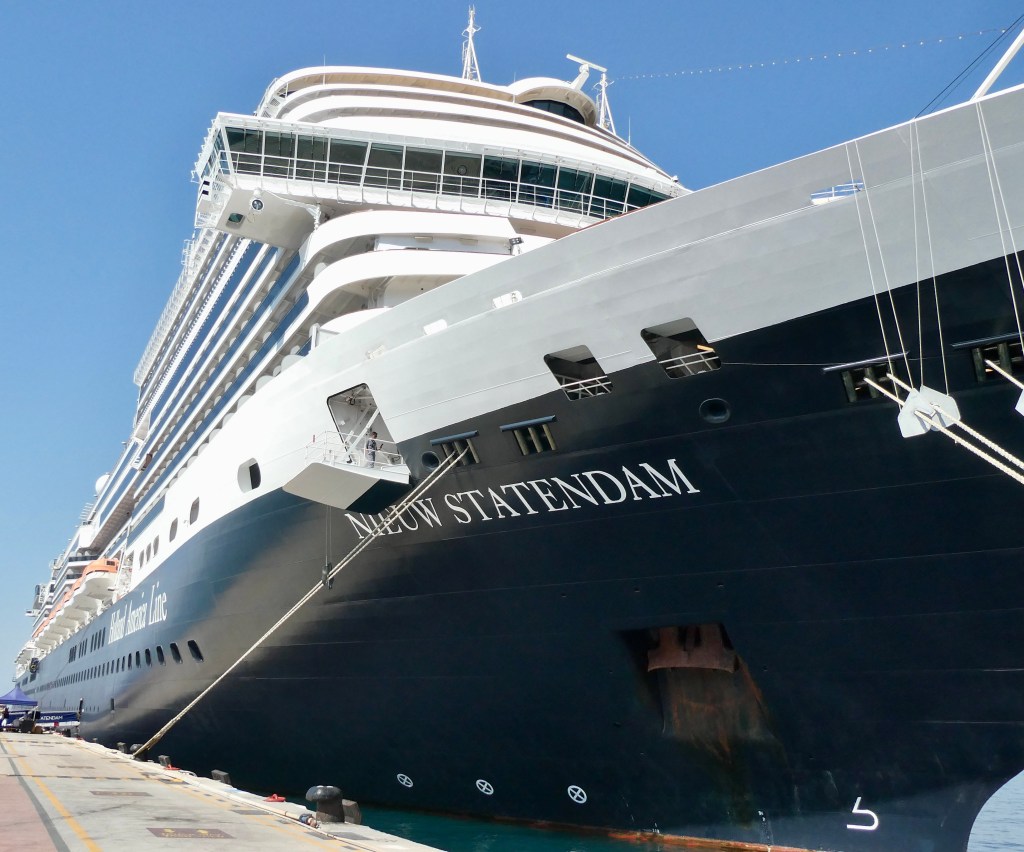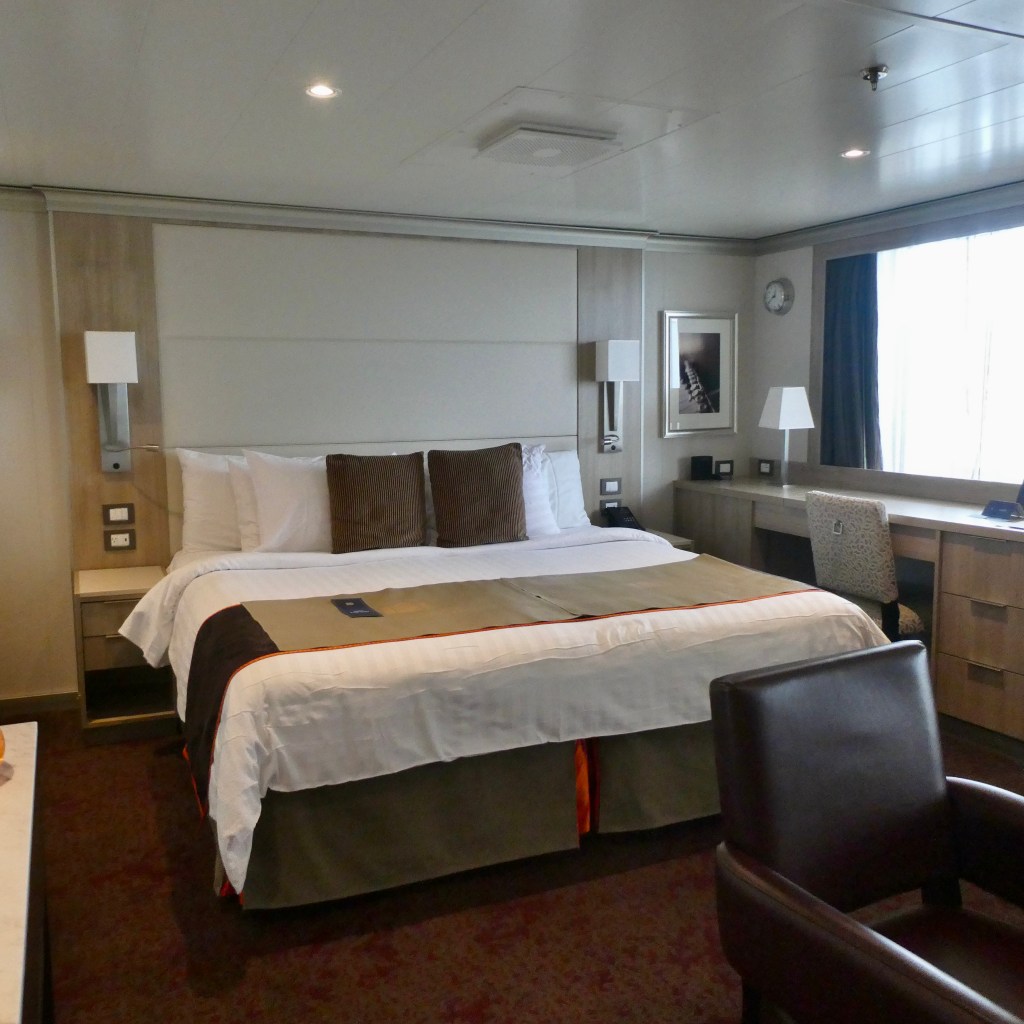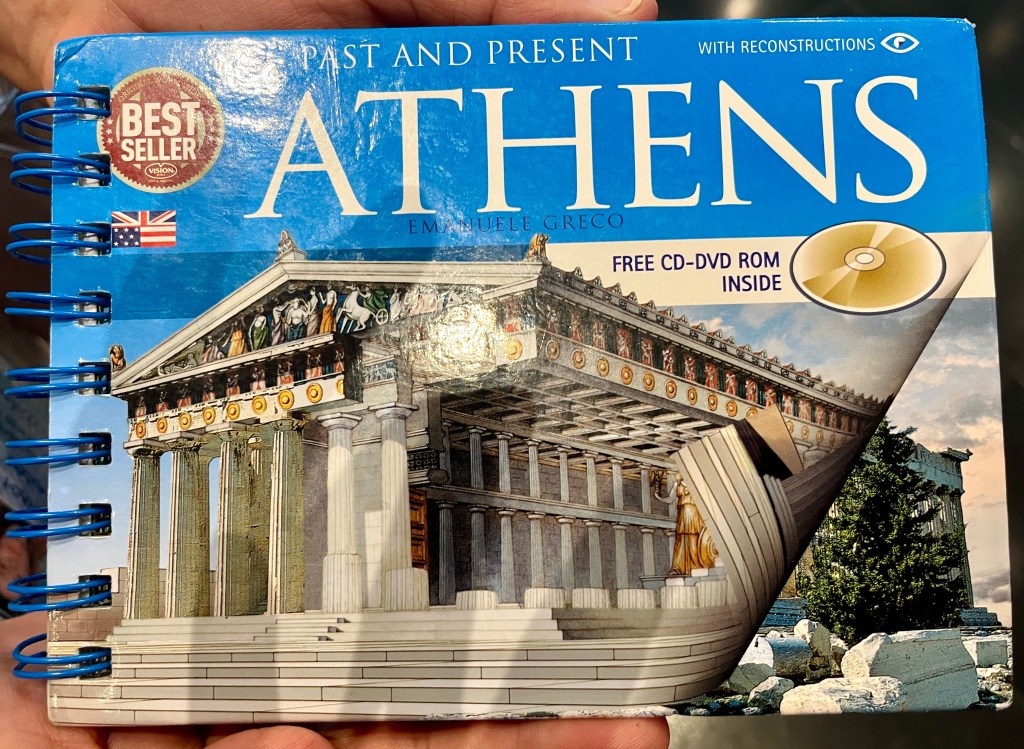London was the embarkation location for our cruise, so we went a couple days early to see the sights. Randy has no interest in anything monarchy related so choosing activities was a bit of a challenge! The monarchy is hard to avoid in London! In the end, we decided on a private tour of the Tower of London, a River Cruise along the Thames, and Piccadilly Theater with Jo and Flynn.
We met for breakfast at the hotel and then Flynn joined us for a walk around our hotel in Westminster.

We saw several of the iconic red phone booths.

We saw Westminster Abbey from several vantage points.


We entered Parliament Square Garden, and were not surprised to see Winston Churchill. A guide later commented on this statue that he looks grumpy, because he always looked grumpy. Of course he was guiding the country during some trying times.

We were surprised to see Abraham Lincoln!

There were people represented in the monuments that were not familiar at all such as George Canning. He was the shortest serving prime minister (119 days) when he died in 1827. (His shortest tenure record was taken by Liz Truss in 2022 at 49 days.)

We saw the clock known as Big Ben. Actually Big Ben is just the name of the mechanism. The Tower Clock (its real name) was renamed Elizabeth Tower to mark the queen’s Diamond Jubilee.

The Elizabeth Tower leans slightly.

The Parliament of England meets in the Palace of Westminster. The palace was the primary residence of kings from the eleventh century until 1512 when a fire destroyed the royal apartments. Parliament continued to meet there. The palace suffered a more serious fire in 1834 and suffered fourteen bombing raids during World War II. Despite it all, the castle stands and the parliament still meets there.

Richard I was King of England from 1189 to 1199. He was known as Richard the Lionhart because of his military leadership.

Oliver Cromwell, 1599 – 1658, was one of the most important figures in British history. He was a statesmen, politician and soldier. He remains controversial because of his means for gaining and maintaining power and his brutality against Ireland.

The Palace of Westminster has been a Unesco World Heritage Site since 1987.
After our walk about, Flynn and Jo took a tour of Westminster Abbey while Randy and I took “the tube” to the Tower of London.

The concierge at the hotel told us the tube would be much quicker and less expensive than a taxi or Uber.

To ride, you tap your credit card as you enter the system. We each needed our own credit card. We tapped the same cards again when exiting after our ride.

After a 15-20 minute ride, we arrived at the Tower of London and met our tour guide, James. He was impeccably dressed and just what you’d expect from a British gentleman.

James is the gentleman on the left standing with one of the Yeomen Warders, popularly known as a Beefeater. He told us we had made a very good choice touring with James.
The warders are symbolically responsible for looking after prisoners in the tower and safeguarding the British Crown Jewels. To be a warder, one must have 22 years of military experience. They, and their families, live within the tower fortress.

These apartments are for some Tower officials and a few of the high ranking warders.

One of the warders, Christopher Skaife, is also the Ravenmaster. He wrote a book about the tower ravens and their care that Randy and I read prior to our trip.

There is much history and tradition regarding the Tower Ravens. Although only a couple of the ravens written about in the book are still alive, it was interesting to see their space and hear about the new birds. The birds are usually allowed to fly about during the day but are put to bed at night.

The Beefeaters conduct tours around the Tower of London and it was quite a dilemma to choose between one of their very well attended and well regarded tours or a private tour. In the end, we were happy with our tour for two with James.

The Tower of London was founded in 1060 by William the Conquerer.

The White tower was, and is, the most famous building.

The White Tower holds the Chapel of St. John, built as part of William’s royal residence. The chapel has been in use for over 900 years.

After several phases of expansion in the 12th and 13th centuries, the Tower complex includes several buildings within two rings of defensive walls and moat.

This walkway is between the two defensive rings.

The Tower of London has served as a royal residence for many kings.


These rooms show how they were furnished during the reigns of Edward I and Henry III in the 13th century.

Over time there were menageries held within the tower walls. These are depicted by artwork around the grounds. James told us most exotic animals were gifts from foreign leaders.

There is much drama and trauma in the line of the British monarchy. King Henry VI was held prisoner in the White Tower and murdered there in 1471. He was succeeded by Edward IV who died in 1483. Edward had two sons but the two princes disappeared while being held at the white tower. They are presumed murdered on the order of their uncle, Richard, who wanted to be king. He became King Richard III.

The fortress that is the Tower of London held the kingdom’s armory.


This was King Henry VIII’s armor while he was still young and healthy.

His armor had the initials H and K (for Henry and Katherine) before he decided he liked Anne Boleyn more than his wife.

These buildings served as the Royal Mint before it was moved in the late 18th century. The buildings now serve as a museum and has apartments for the yeoman warders.

This section of the tower is unique in that it is made of wood that has survived for so long. There was a devastating fire in London in 1666. Over four days the fire destroyed most of the city and building in wood was banned.

The Crown Jewels of England are held in this building. No pictures were allowed inside but we saw the extensive collection of ceremonial scepters, crowns and “baubles” used in royal pomp and during the coronation of monarchs.
Some of these jewels contain stones from the Cullian Diamond, the largest colorless diamond in the world. The Cullian Diamond was found in 1905 in Transvaal, South Africa. It was given as a birthday gift to King Edward VII by the Transvaal government.
The rough stone was cut into nine large and 96 smaller diamonds. The largest of the nine stones is the 530-carat diamond known as the Star of Africa. It was placed in the royal scepter while others are highlighted in crowns and jewelry.

The Chapel Royal of Saint Peter is known as the burial place for some of the most famous tower prisoners including three queens of England. Anne Boleyn and Catherine Howard were wives of Henry the VIll. Jane Gray was a 17 year old who was manipulated by her family to claim the throne. She served as queen for only nine days. All three queens were executed after being imprisoned in the Tower during the 16th century.
The castle has history as a prison. Elizabeth I was held there by her sister Queen Mary, before becoming queen herself. Sir Walter Raleigh was held there after marrying one of Queen Elizabeth I ladies in waiting without her permission.

Despite its reputation, only seven people were executed in The Tower prior to the first and second world wars. Amidst the wars, 12 men were executed in the tower for espionage.

The plan was to hold Adolph Hitler within the tower as World War II was ending. Adapted plumbing was added for this purpose but, of course, never used. Hitler committed suicide in Germany.

Rudolph Hess, deputy commander of the Nazi Party, was held in the tower (on the top floor above) from May 1941 until the end of the war. He was transferred to stand trial at Nuremberg. He subsequently was imprisoned in West Berlin.

The Tower of London is a World Heritage Site.

The Tower Bridge across the Thames River is nearby.

We headed to our next activity and boarded a boat for a Thames River Cruise with Afternoon Tea.

We each chose our own flavor of tea.

We had a generous tray of sandwiches and desserts.

We had scones with clotted cream and jam. In Devon the cream is spread first and then topped with jelly. In Cornwall, the jelly is spread then topped with cream. I tried one each way and both were delicious.

Unfortunately the narration on our cruise was not well done and we didn’t always know what we were looking at.

We saw Shakespeare’s Globe Theater. That would be fun to visit on another trip to London.

Here is the New Scotland Yard. We don’t want to visit there unless they give tours.

The London Eye takes 800 people at a time on a 30 minute ride. On a clear day a rider can see Windsor Castle 25 miles away. The London Eye is owned by British Airlines.

At the end of our cruise, we disembarked near the Tower of London.

The Tower Bridge was very pretty all lit up.
We got back on the tube and headed toward Piccadilly Theater. (We were eventually charged the equivalent of $7.16 USD each for our rides. We both completed two rides but were only charged once – perhaps it was a daily rate. I have no idea.)

When we got off the tube we walked through Trafalgar Square. The monument is Nelson’s Column to commemorate Vice-Admiral Horatio Nelson’s victory at the Battle of Trafalgar during the Napoleonic Wars.

We found the Piccadilly Theatre and met up with Jo and Flynn.

Jo and I are ready to see Moulin Rouge.

The Piccadilly is one of the largest theaters in London. If the bricks used to make it were lined up end to end, they would stretch from London to Paris.

About fifteen minutes before the production began, we were entertained by cast members doing silent, erotic, meanderings around the theater.



Pictures were not allowed during the show but it was AMAZING. The four of us see a lot of music theater and we were so very impressed!!
None of us have seen the movie Moulin Rouge starring Nicole Kidman but it is hard to imagine it being half as good. Maybe someday we will watch it.
We were in London on January 11, 2024.
Next Up: We board the Viking Venus and head to Amsterdam.






















































































































































































